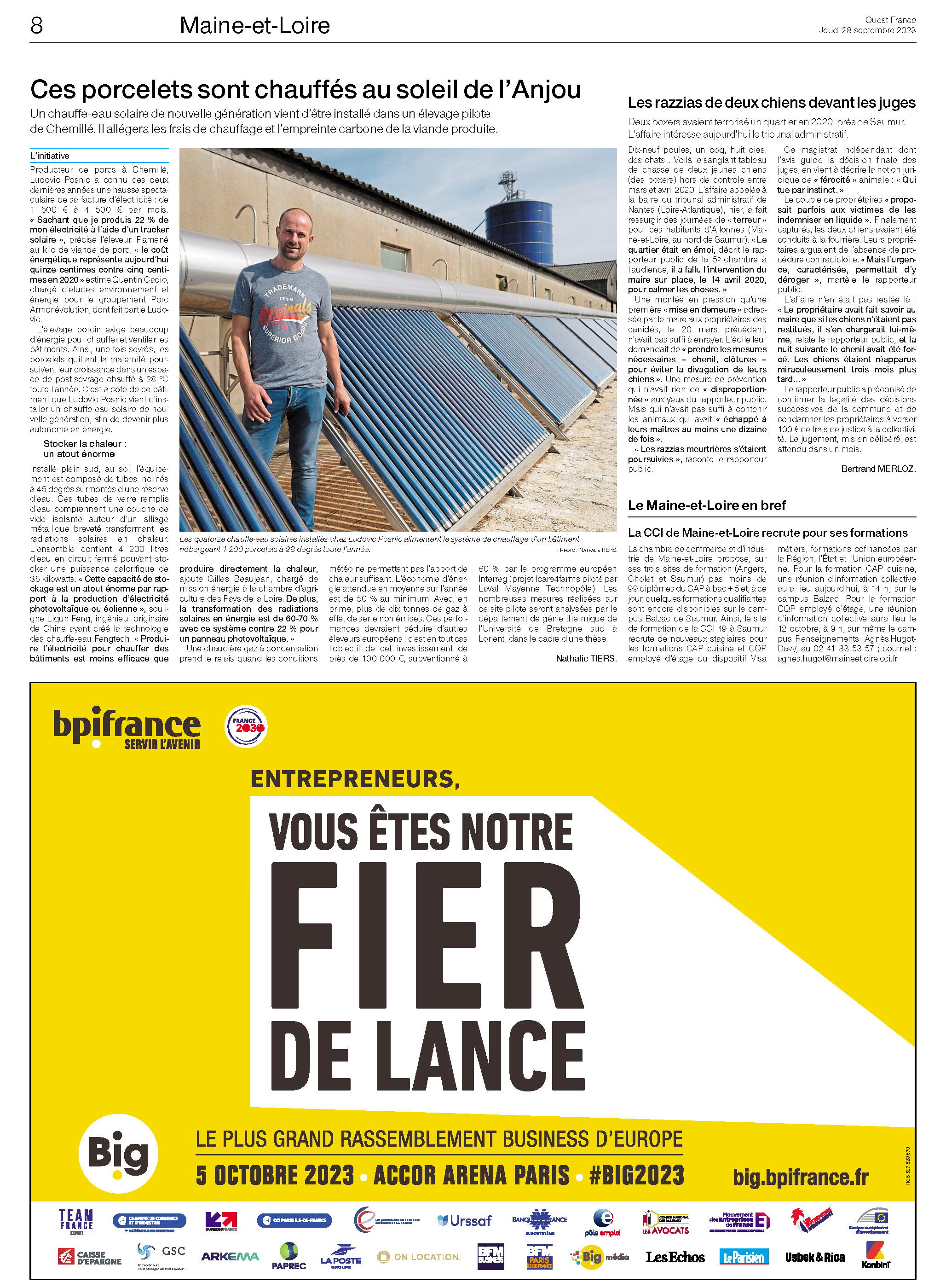Ouest-France reporter Nathalie Tiers wrote about the inauguration of the 4th pilot site. As the newspaper is subscription-based, below is a copy of the translated story.
These piglets are heated by the Anjou sun
A new-generation solar water heater has just been installed on a pilot farm in Chemillé. It will reduce heating costs and the carbon footprint of the meat produced.
The initiative
Ludovic Posnic, a pig farmer in Chemillé, has seen his electricity bill rise dramatically over the past two years, from €1,500 to €4,500 a month. "Knowing that I produce 22% of my electricity using a solar tracker," explains the farmer. In terms of energy costs per kilo of pork, "today they represent fifteen cents, compared with five cents in 2020", estimates Quentin Cadio, environment and energy studies manager for the Porc Armor évolution group, of which Ludovic is a member. Pig farming requires a lot of energy to heat and ventilate buildings. Once weaned, piglets leaving the maternity ward continue their growth in a post-weaning area heated to 28°C all year round. Next to this building, Ludovic Posnic has just installed a new-generation solar water heater, to become more energy self-sufficient.
Storing heat: a huge advantage
Installed south-facing on the ground, the equipment consists of 45-degree inclined tubes topped by a water reservoir. These water-filled glass tubes include an insulating vacuum layer around a patented metal alloy that transforms solar radiation into heat. The whole system contains 4,200 liters of water in a closed circuit, capable of storing 35 kilowatts of heat. "This storage capacity is a huge advantage over photovoltaic or wind-generated electricity," points out Liqun Feng, the Chinese engineer who created the Fengtech water heater technology. Producing electricity to heat buildings is less efficient than producing heat directly," adds Gilles Beaujean, energy officer at the Pays de la Loire Chamber of Agriculture. What's more, this system converts 60-70% of solar radiation into energy, compared with 22% for a photovoltaic panel. A condensing gas boiler takes over when weather conditions don't allow sufficient heat to be supplied. The expected average energy saving over the year is at least 50%.
As a bonus, more than ten tonnes of greenhouse gases are not emitted. This performance should appeal to other European livestock farmers: in any case, that's the aim of this investment of almost €100,000, 60% of which has been subsidized by the European Interreg program (Icare4farms project managed by Laval Mayenne Technopôle). The numerous measurements carried out on this pilot site will be analyzed by the thermal engineering department of the University of Southern Brittany in Lorient, as part of a thesis.

